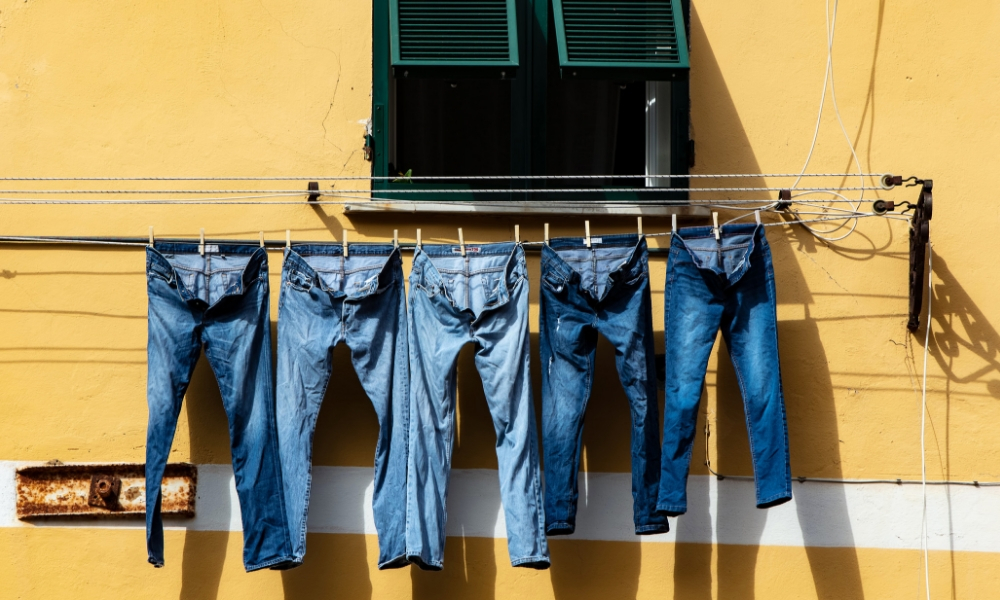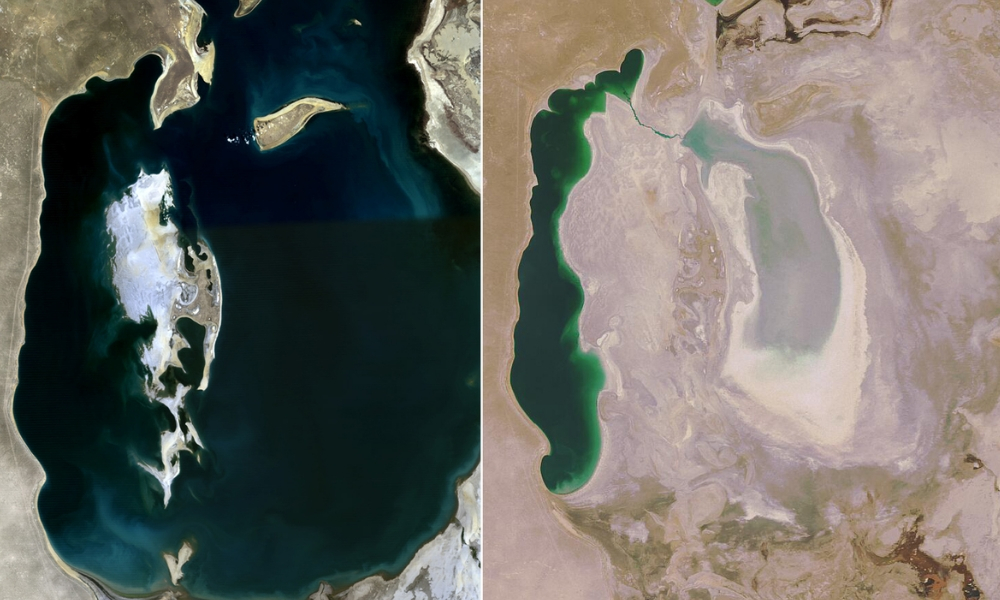Blog: How clean are your clothes?
Date 12.10.2018

Dr Simon Sneddon, Senior Lecturer in Law at the University of Northampton writes…
Last week, investigative journalist Stacey Dooley, who has previously dealt with issues such as human trafficking, drug dealing and armed gangs, moved in a new direction. As part of her BBC Three series “Stacey Dooley investigates…” she looked at the environmental impact of fast fashion in “Fashion’s Dirty Secrets.”
The clothing industry is a dirty business. Environmental harm is caused by the use of chemicals, which are used in the production of the cloth (either as pesticides on natural products, or as the raw material for the fabric itself) and in the dye process, as a by-product of the decomposition of the tonnes of clothing that are sent to landfill, and as a consequence of washing synthetic fibres.
What Dooley did is not a startling revelation, as the environmental impact of the fashion industry has been known about for years, but it will hopefully bring it to the attention of a new audience. The demographic cross over between readers of the Environmental Health Perspective journal (which published an article on this issue in 2007) and BBC Three is unknown, but probably small.
I remember being in a shop a few years ago and seeing a pair of underpants for sale that had been dehydrated. They are still on sale (search for “Dehydrated underpants” if you dare!). the ones I saw were on sale for £1.99, and had been made in Bangladesh (full sized), shipped to somewhere in South America for the dehydration process, entered the EU in Spain and had then travelled to the UK. A colossal journey which resulted in a very cheap novelty product, which is not intended to be worn for long before being discarded. I digress, but this is part of a wider discussion about internalising environmental externalities (or making sure the retail price of things reflects the environmental impact that making them has).
One of the most striking visual things that Stacey Dooley did was, in her own words “to ruin everyone’s Saturday morning” in Glasgow, by demonstrating the quantity of water that was needed to make the cotton clothes they had just bought.
According to Stephen Leahy’s 2015 book “Your Water Footprint: The Shocking Facts About How Much Water We Use to Make Everyday Products” it can take up to 7,600 litres of water to make a pair of jeans. This does not include the water that will be used in washing them over their lifetime. Statistic Brain (subscription needed) estimates that 1.24bn pairs of jeans are sold every year (2017), which means that (wait for it) 9.4 trillion litres of water are used to make jeans.
I know, as some people have commented in the discussion bit of every news story on this, that the water doesn’t simply vanish (a litre of water weights a kilo, and we are all aware that our jeans do not weigh 7.6 tonnes), but it is being diverted from rivers and seas. As the show illustrated, the Aral Sea, between Kazakhstan and Uzbekistan, for example has lost most of its volume, primarily because of the cotton farms of Uzbekistan.

The Aral Sea in 1989 (left) and 2008 (right)
In terms of cost, the water companies in the UK tend to price water by the cubic metre, or 1,000 litres. United Utilities charge “around £3” and SSE and Wessex Water sell for £2.20. The cost of just the water in our jeans should be £16.72, and added to this is the cotton, dye, labour, transport, storage, shop overheads, advertising, tax and everything else that the goods accrue as they are brought to market.
In addition to the water which is used in the production of clothes, we must consider the pollution which is produced by the manufacturing process.
Carbon, for example. Last week the IPCC met in South Korea, and urged the world to do more to move to a low- or zero-carbon future. 80 per cent of our carbon emissions need to be cut in the relatively short term, in order to avoid a global temperature rise of three degrees, which would put millions at risk from flooding, poverty and disease.
The wastewater from dyes used in production of clothing are often dumped into rivers and watercourses without being treated. This makes the water undrinkable, and the groundwater toxic to crops and livestock, but often the businesses have chosen to operate in a country with poorly developed environmental legal systems, so they cannot be prosecuted. As Kaye points out:
“Moral outrage will not convince many leading clothing manufacturers to change their ways; as long as companies do not pay a price for the land and water their suppliers poison, watch for the excessive use and abuse of water to dye clothing to continue.” (Kaye, 2013)
So, what do we do?
There are three main courses of action, well four if we include doing nothing and take a Micawber-esque view that “somehow will turn up” to solve things.
We can blame the government.
That’s usually our first port of call. “We need stronger laws” is the battle-cry. Cool. Write to your MP, see if you can distract them from Brexit.
We can blame the fashion industry.
* They are sourcing material from further afield, often targeting places with a ready supply of cheap labour combined with a lax approach to environmental regulation and a string thirst for hard currency.
We can take the blame ourselves.
After all, in most cases we (as a society) voted the government into power, and we are the ones who are buying the clothes. We have the power to change this.
I am not suggesting that we all stop buying clothes and end up looking like the Walking Dead, but do we need to buy so many, so often? As Shakespeare’s King Lear says to his daughter Goneril:
“If only to go warm were gorgeous,
Why, nature needs not what thou gorgeous wear’st,
Which scarcely keeps thee warm.” (King Lear Act 2 Scene 4)
We don’t need so many clothes, we have been encouraged, cajoled, marketed at and sold the idea that we want more, and faster, and cheaper, and have been deliberately steered away from peeking under the skirts of the fashion industry to see the grubby truth.
One solution is for us to buy more of our clothes from charity shops. There is a clear incentive to do this – they are cheaper – but what is the incentive for people to donate? In the United States, for example, the “government offers tax incentives for citizens who donate household goods to charities such as the Salvation Army and Goodwill Industries, which salvage a portion of clothing and textiles that would otherwise go to landfills or incinerators.” (Claudio, 2007).
How about an innovative scheme whereby the Gift Aid that is claimed by charities on the donations of UK tax payers is shared by the taxpayer? Initial income for charities would fall, for sure, but the US scheme saw a 67 per cent rise in donations in the first six years after it introduced the tax incentive scheme (Claudio, 2007). If that were mirrored here, charities would benefit in the medium and long term.
Another solution is for governments in the consuming world to pass legislation that requires retailers to ensure their entire production chain operates according to high environmental and ethical standards. This is actually very easy to implement, but probably very difficult to enforce. Still, as Roosevelt said
“Nothing in the world is worth having or worth doing unless it means effort, pain, difficulty.”
* There are, of course, differences in approach across the industry. Some companies have a very good environmental and human rights record, but others do not. Part of our duty is to find out which fits into which category, and to shop accordingly. It might be more expensive per garment in the short term, but so it should be.